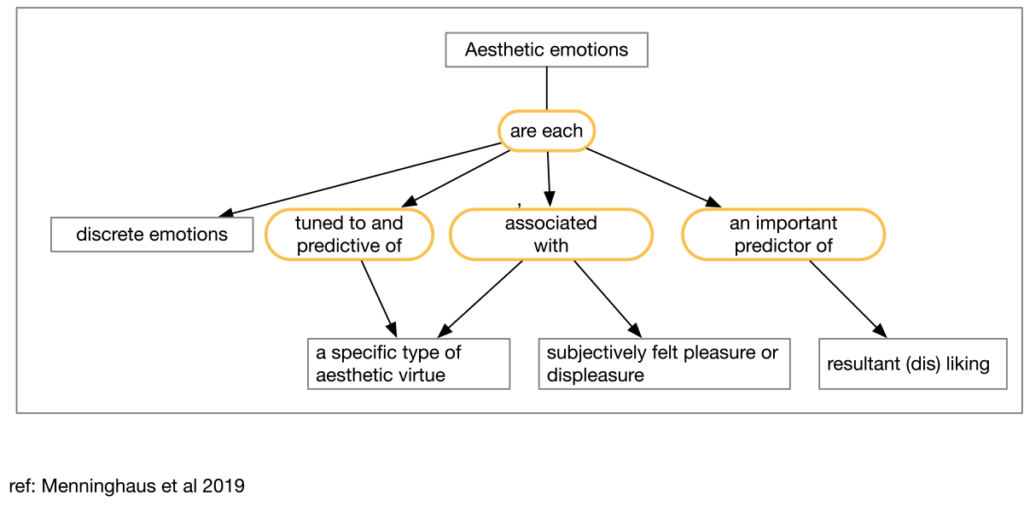Sunday evening, I led a humanist meeting on self-regulation of emotion with and without music.
Continue reading How Do you Understand and Regulate your Emotions—With and without Music?
In this post, looking back at last week:

This post rounds out some of my work of the last week.
This week, I didn’t publish much. I was mostly focused on reading about music-related emotions, for a chapter of my new book Discontinuities: Love, Art, Mind. Some of the ideas that will figure in this chapter:
Using our operationalized definitions of pitch height and timing, we found that
– 1. major key pieces were in fact 29% faster in attack rate than minor (however, we note that this difference was driven entirely by Bach). Additionally,
- major key pieces in this corpus were approximately a major second (i.e., two halfsteps) higher – a distance previously shown sufficient to evoke changes in emotional tenor (Ilie and Thompson, 2006).
and I’ll explain why that matters.
I was interviewed recently by CNN about the cognitive shuffle. The article appeared on Tuesday: “Cognitive shuffling: A mental trick to help you sleep | CNN“. This was actually quite a good article, though they got the order of my papers wrong.
I was happy that they noted that my original impetus to develop strategies to facilitate sleep-onset was motivated by the example of Prof. Claude Lamontagne. Lamontagne developed a detailed computational theory of the visual motion perception system from which he derived a novel set of predictions about conditions that would provoke an illusion of motion, which he called the sigma effect. (Not to be confused with the same effect in education.) They even linked to his Ph.D. thesis: Steps towards a computational theory of visual motion detection: designing a working system – University of Edinburgh, which I would recommend to anyone interested in computational psychology or theoretical AI. The predictions were proven true by Lamontagne and several others after him.
Claude Lamontagne contributed an incomplete chapter to my new book, Discontinuities: Love, Art, Mind. Sadly for all of us, Claude died in January of this year. You can read my obituary for him: Obituary for Dr. Claude Lamontagne, Retired Professor of Psychology at the University of Ottawa | by Luc P. Beaudoin | Mar, 2025 | Medium.
I thought to myself, if we understand the sleep onset control system (SOCS) well enough, we may be able to find conditions under which the SOCS can be tricked into triggering sleep onset. The theory I developed makes such a prediction, which is that cognitive shuffling can facilitate sleep onset in that manner.
You can read about my theory and the cognitive shuffle here:
That paper will appear in D. Kay (Ed.) The Cambridge Handbook of Sleep Theories and Models. Cambridge University Press.
I wrote a new detailed functional specification outlining major upgrades to the contextual information retrieval window (“context window”). The goal is for Hookmark no longer to give a mere No linkable item found in app message in app when it cannot resolve the foreground information resource (e.g., because the foreground document has never been saved or the foreground app is not link-friendly).
This was a major highlight of my week. I totally enjoy writing specifications for our software. It is meditative deep work.
We are also planning a super major enhancement to Hookmark which I cannot yet disclose ☹️.
I also worked on Hookmark for iPhone & iPad, which is due for release later this month !
I also worked on Hookmark 6.9, due before end of the month as well.
I’ve hired a professional coach, someone with whom I can discuss how to balance the various aspects of my professional life at:
She will help me prioritize my interrelated projects.
I intend to write a book on falling asleep. More on this soon. But in a nutshell it will focus on sleep onset and insomnolence. That’s the focus. But I argue that to understand sleep onset and insomnolence you need to take an integrative design-oriented approach. As such, the book will delve into consciousness, motivation and emotion, explaining how the sleep onset control system considers them. It will also have sleep hacks, including the cognitive shuffle.
I also spent several hours (maybe too many hours) in communications with colleagues at Somnolence+, where I am a scientific consultant.
Why is uplifting music uplifting Music? How is it uplifting? Why/how is “sad music” sad? We normally simply take it for granted that music can affect our moods and emotions, as people took for granted that apples fell before Newton asked “Why do things fall?” I’m not a musician, but I am a cognitive science guy, so this is a question I am addressing in a chapter of Discontinuities: Love, Art, Mind, which is 80% complete but already for sale on Leanpub in this form.
To answer the above questions we need to have answers to the more general questions: why do humans create and consume art in its various forms. The Discontinuities book will review several answers and argue for a specific explanation.
For now, I refer to the answer given by Brian Boyd in his book, On the Origin of Stories: Evolution, Cognition, and Fiction which I’ve illustrated below:
That is our primate ancestors (before homo sapiens) developed the ability and propensity to play. This led homo sapiens to develop the ability and inclination to produce and consume stories and music, which evolved in parallel or in series in order to (a) attract and manipulate attention, and (b) bond in groups. Play, story telling, story consumption, and music playing and consumption also evolved because they helped humans sharpen their beliefs and cognitive capacities.